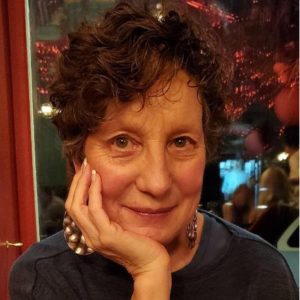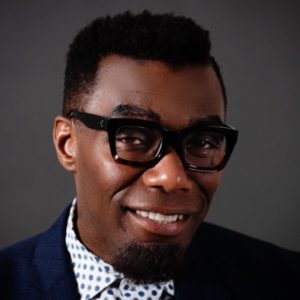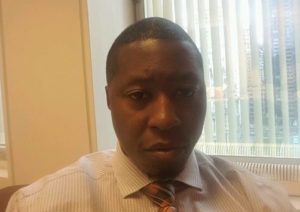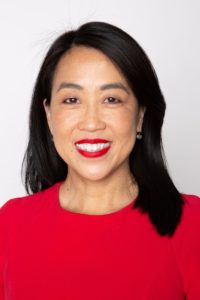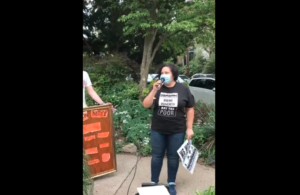Evictions at PATCO encampment show fragile nature of last summer’s Parkway agreement
 June 14, 2021
Category: Featured, Long, Purpose
June 14, 2021
Category: Featured, Long, Purpose
Updates
Updated so that every reference of Bethesda Project includes the word "Project." (June 16, 2021 at 6:25 a.m.) Updated (August 18, 2021 at 7:23 a.m.) to remove photos of individuals evicted at the PATCO station, and to clarify who will be developing the tiny home village in West Philadelphia and Student-Run Emergency Housing Unit of Philadelphia's. relationship to the encampments. Additionally, a number of assertions made by sources interviewed for this article, related to the agreements to end the encampments, are contested by members of Philadelphia Housing Action and Occupy PHA on the basis that those quoted were not directly involved in the encampment agreements. Among them are the inclusion of the ACT-UP activist’s characterization that the Philadelphia Housing Authority had yet to provide housing options as promised in the agreement, and comments by the director of the Office of Homeless Services related to the availability of public housing stock. Further, members of Philadelphia Housing Action and Occupy PHA strongly contest the veracity of the statements made by the reporter’s anonymous source, and reject that source’s characterizations altogether, including the request for anonymity.Twenty-nine-year-old Jessica, one of the many people experiencing homelessness residing at the PATCO station earlier this year, waved toward her tent, showing the camera large slashes the maintenance crew cut down the side.
In video testimony recorded by activists, she proclaimed exasperation with the Philadelphia Housing Authority. Jessica demanded housing, stating on camera that it’s unfair the PHA has so many unused, abandoned properties.
Over the past few years, Jessica, a survivor of trauma and abuse, saw tent cities come and go, including ones on the Parkway, 30th St., Kensington Ave., Suburban Station, and more.
“But they put us down here, we’re going to go back up there, and you’ve got the whole thing doing over again,” she said to the camera. “Fuck that. Because if they don’t get us off from up there, when we can’t get down, we’re going to come down here, and repeat the cycle all over again.”
In what is now a spinning carousel without end in Philadelphia, police dispersed another encampment at the 12th and Locust Street PATCO stations in early May. City officials — who barred press from the proceedings — reported that about half the residents accepted alternative housing or treatment. Unhoused activists and allies from ACT-UP Philadelphia and the Pennsylvania Union of the Homeless responded to the situation, and the coinciding City Council Budget testimony of Liz Hersh, director of the Office of Homeless Services, with protest.
Around two dozen demonstrators staged an eviction at Hersh’s residence, leveling charges of violent evictions, unsafe shelter conditions, a lack of accountability, and more at OHS.
According to Max Ray-Riek of the HIV and AIDS activist organization ACT-UP Philadelphia, the city’s decision to break up the PATCO encampment forced several residents back onto the streets. “I have heard that there are people back even in the PATCO station — just without tents this time,” Ray-Riek said. “So more danger, more exposed, less privacy, colder. In a lot of cases there is no change other than the trauma of losing stuff and security.”
The situation is two steps back from the forward momentum it took last October when headlines proclaimed that the summer-long standoff at encampments on the Benjamin Franklin Parkway and a vacant lot on Ridge Avenue in Sharswood resulted in a “historic agreement” to clear the encampments and place people in permanent, sustainable housing.
Activists charge the city with not fulfilling its promises.
Ray-Riek said the city has yet to provide the 50 Philadelphia Housing Authority properties as promised in the original agreement, showing activists unviable units or denying access to viable ones. According to Ray-Riek, city officials also passed on a proposal for tiny-home villages by a group related to the encampments.
The proposal the city passed on was submitted by the Student-Run Emergency Housing Unit of Philadelphia, which was founded by Stephanie Sena, and has no affiliation with the encampments, other than Sena’s part in filing an unsuccessful lawsuit that sought to prevent the city from closing down the Parkway encampment. The city chose Mosaic Development Partners, a Black-owned company based in Strawberry Mansion, to develop a tiny home village in West Philadelphia, as first reported by The Inquirer.
Conversely, Hersh stated that activists have yet to identify all of the houses they want, while noting that the city’s stock of available units is small.
“The bottom line is that the stock of publicly owned housing that is, first of all, can be fixed up with a reasonable amount of money, or that’s habitable is very, very small,” Hersh said. “That’s one of the reasons why, eight months later the [activists] still have not identified all the houses that they want.”
At least one person with knowledge of the negotiations last summer said they were more of a dog-and-pony show for the press, made to seem like a victory for all involved to the detriment of those living at the encampments.
An advocate and activist close to the ground, who observed the situation firsthand but asked to remain anonymous for fear of reprisal, told Generocity that much happened behind the scenes that was never made public. According to this person, many of the encampment’s residents found the deal unacceptable, preferring to remain at the Parkway. Headline-grabbing leadership not experiencing homelessness forced people to evacuate the camp, sometimes, according to this person, at knife point.
Contemporaneous reports from social media at the time appear to confirm these reports. And while negotiations between activists and the city continue, this source noted that at least five people living on the Parkway last summer have since died.
While the deal itself has yet to come to fruition, the source told Generocity that the experience of last summer’s encampments helped many people.
“The actual encampment itself was definitely a net positive,” this person said. “I saw people recover from addiction there, because they were able to stabilize. I saw people able to leave their abusive partners who they have been on the street with for a long time, because they finally had a community. I saw people just have a community that they haven’t been afforded in years.”
“I think that has changed a lot of people’s just general mindset going into the future who are homeless here,” they continued.
Round and round with “housing first”
According to data produced by the Office of Homeless Services, the city’s population of people experiencing homelessness continues to decrease, meaning Philadelphia has the lowest number of unhoused persons of any Top 10 major U.S. city.
The January point-in-time count, a one-day snapshot of persons experiencing homelessness as defined by the U.S. Department of Housing and Urban Development, shows that since 2018, the number continues to fall, dropping from 5,788 to 5,634. Broken down for 2020, those numbers show 4,676 sheltered persons and 958 unsheltered.
As part of the office’s stated goal of making homelessness both rare and brief, further data shows that 68% of persons entering housing assistance in 2020 did so for the first time, while the average length of stay in an emergency shelter, safe haven, or transitional housing was 157 days.
But, as Generocity reported a few years ago, point-in-time data is a flawed measurement, often, if not always, undercounting the city’s population of people experiencing homelessness. A 2019 investigation found that it not only relies on human canvassers to count heads in the middle of the night, in the middle of winter, but that point-in-time skips unhoused families in temporary and displaced living situations, many of which are unsafe. Hersh acknowledged such limitations at the time, welcoming an open conversation to address the problem.
Hersh did state that housing is a human right and told Generocity that she and her team run OHS on the basic principle of housing first. The notion is in stark contrast to the old way of doing things, which Hersh said involved bringing people into shelters and then determining whether or not they were “worthy” of housing.
According to her, OHS subscribes to a model that says successful behavioral health, economic health, and more comes only when a person is secure in where they live. “That is based in evidence, as well as our moral compass,” Hersh said, referring to the idea of housing first. “We can’t always give people the ideal that they would like and we would like, but we believe that for recovery, for employment, for education, for family, health and stability — for all of those things that all of us who are housed take for granted, you have to have housing first.”
Still, others from across the spectrum of homelessness service providers push back when OHS calls itself a “housing first” organization,” as the term itself has a very specific meaning.
Michael Hinson, Jr., the president, and chief operating officer of Philadelphia’s supportive housing nonprofit SELF Inc. explained that “housing first,” as defined in both research and practice, states that providing a person with a house will give them the ability to move forward with or overcome any social determinants holding back their ability to succeed. Researchers modeled the practice on smaller, specific groups of persons before adapting it to the larger population of people experiencing homelessness.
SELF Inc., a human services nonprofit led by former Philadelphia Mayor Rev. Dr. W. Wilson Goode, incorporates housing first among its many service approaches, including harm reduction, low barrier, social determinants of health, and more. But, according to Hinson, what Philadelphia does is more of a “housing focused” model, although he singled out groups such as Pathways to Housing for their strong “housing first” model.
The challenge for either a housing-first or housing-focused model is adapting it for those who need a higher level of care, Hinson told Generocity.
“Housing-first without the direct support services to support that higher need of care around either behavioral health or mental health issues, or even around substance use disorder can be very challenging,” Hinson said. “Not just for the residents who might be in housing first [or] focused program[s], but also for the communities that those programs are actually in.”
However one refers to OHS’s approach, the office sits at the crossroads of Philadelphia’s growing housing instability crisis.
Officials there work with a multitude of different city departments to provide services and opportunities to individuals. Chief of Staff David Holloman explained that their team contracts with around 65 different providers in mental health, substance use, health care, and more. In many instances, they’re working with people in immediate crisis with emergency healthcare needs that require core wraparound behavioral health services.
Holloman told Generocity that his work is built around a person-centered system. He tries to find the balance between what someone needs and what they’re willing to do, hoping to create a perfect storm of support. The process can be complex, he said, as a constantly changing environment and changing needs of people challenge the system.
According to Hinson, he most significant problems are systemic.
“The fact of the matter is when you have the kind of outcomes that say 74% of the people seeking homeless-related services in the city of Philadelphia are Black people, that’s a problem,” Hinson said. “It is a systemic problem.”
How COVID hotels kept the carousel spinning
And then last year came the pandemic, creating the need for testing in shelters and reduced capacity due to social distancing guidelines. Testing continues to this day, while over 500 persons experiencing homelessness have received vaccinations.
"This is our first rodeo around how to maintain our work in the pandemic world."
“This is our first rodeo around how to maintain our work in the pandemic world,” Holloman said. “There wasn’t a play book that was given to us. We were sort of on the fly with the constant changing information.”
But a point of contention with Philadelphia’s unhoused population is, in fact, the city’s handling of the COVID-19 pandemic.
According to Ray-Riek and others close to the situation, city officials promised persons experiencing homelessness that the COVID hotels would be their last stop before permanent housing, but in an unexpected turn, evicted them at the end of December. Activists said that funding for the hotels dried up, with Ray-Riek telling Generocity that such costs were reimbursable under FEMA’s Public Assistance program — a fact confirmed by the city earlier this year.
Holloman said that the hotels were initially designated for elderly persons from 60 to 65 years of age and older. Anyone who checked into one of the sites and was willing to work with OHS would not be evicted, a plan that continues to this day. But according to Holloman, federal funding, not city guidelines, didn’t allow for the extension of those parameters in any way.
In addition, OHS considered the possible return of Philadelphia’s tourism trade, with Holloman noting that many of the employees working in these hotels are people of color, making around $13 an hour.
Over at Self Inc., organizers took serious steps to prepare for the pandemic from the beginning, implementing mitigation plans that included social distancing, recognizing symptoms, temperature checks, locating nearby medical centers, and much more. Hinson said that his team made a concerted effort to become thought-leaders in the field regarding COVID-19. The primary goal was to keep as many people as possible safe, not only at SELF but throughout the entire network of partners, including the city.
The SELF Inc. team adopted best practices that they shared openly with everyone working with people experiencing homelessness. According to Hinson, it took some time for everyone to agree with, and join in, SELF’s efforts.
“At the very beginning of the epidemic, with the best information that we had available at the time, we said to our city partners that they need to screen people’s temperatures and ask people questions related to whether they are having any symptoms of the flu or what flu-like symptoms that could be COVID,” Hinson said. “And if those individuals have those kinds of symptoms, those individuals should be referred to medical treatment versus to congregate emergency housing settings.”
“Now that took a minute for our partners at the city to get onto,” he continued, telling Generocity that some of SELF’s other partners were hesitant as well.
With the closing of the COVID hotels, Philadelphia’s carousel of unstable housing gave people limited choices. Both Ray-Riek and a source close to the situation said that the city’s shelter system is unsafe and restrictive. In a congregate shelter, curfews and overabundant rules keep people cooped up like children, close-quarters make COVID an omnipresent threat, and violence and sexual assault are always issues.
Misty Sparks is the director of entry-level programs at Bethesda Project, which provides emergency shelter, housing, and supportive services at 16 locations throughout the Philadelphia area. She explained to Generocity that outside providers run all Philadelphia shelters via contract.
At Bethesda Project, the first line of defense is a competent, well-trained staff that remains aware in the spaces provided. Along with general precautions such as security cameras, all employees are trained in conflict mediation. “We work really hard to build strong relationships with the folks that are in our programs just to build that trust so that folks can feel comfortable to report when something’s not right,” Sparks said.
But fights do occur, and conflict does arise, Sparks said. She noted that Bethesda Project’s niche is working with people who struggle with long-term homelessness, making discharge from their shelters a last resort.
“I wouldn’t be the one to say shelters are safe, necessarily,” Sparks said. “I don’t think that they’re inherently dangerous, OK? But I do think people have to … if you’re living in a room with 60 other people, you have to protect yourself and have to take care of yourself.”
Bethesda Project continues to hold conversations concerning burdensome rules and restrictions in congregate shelters, striving to give residents the freedom they both want and deserve. In addition, staff works with members of the trans community to ensure they feel safe.
Hersh said there are domestic violence shelters with unpublished addresses to keep people safe from abusive partners, encouraged everyone to speak up about any issues in congregate settings, and said OHS takes every claim seriously.
"I think as a trans person myself, I would never want to go into a congregate shelter."
But, as Ray-Riek explained, sometimes it’s not that simple.
“I think as a trans person myself, I would never want to go into a congregate shelter,” Ray-Riek said. “I’m a trans man. I think it would be uncomfortable for women to have to shower with me. But I think it would be uncomfortable for me to shower with six men in a shelter setting. I wouldn’t know how I would be safe in either a male or female shelter having to use a shared bathroom.”
“Whereas, if there was a hotel type setting, and I had a bathroom to myself, I would feel comfortable,” he said.
A merry-go-round of evictions breaks down trust
Malik, a person experiencing homelessness, looked into the camera and expressed the simple idea that nobody should be evicted from a place when they’re struggling because, in his own words, respect goes a long way. He’s an artist who goes by the pseudonym John King, lives by faith, and believes that something better will come his way.
In a recording made by activists, Malik said he wants people to know that he’s a good person and that he’s never given up on anyone because God never gave up on him.
Despite being in need himself, Malik would give anyone the sweater or coat off his back. In faith and love, he helps people all day long.
“You shouldn’t have [to] evict nobody, especially if they can’t get out of their situation or they’re down and out,” Malik said. “You should aim to support and help people, because that’s a good thing to do, that’s good deeds.”
"You should aim to support and help people, because that's a good thing to do, that’s good deeds."
At the same time that police and other officials began evicting persons from the PATCO station earlier in May, Hersh took questions from City Council as part of an annual hearing to determine the viability of the mayor’s proposed fiscal year budget.
Hersh was pleased to learn that OHS funds would be restored following cuts last year due to the pandemic. She told Generocity that despite the issues with COVID-19, OHS cut no services and put out all of the federal CARES money received on the street.
Still, she said, there might be some funding gaps next year.
But Hersh’s positive take didn’t prevent a tough line of questioning from several council members, some of whom noted the coincidental timing of the PATCO evictions occurring at the same time as the hearing.
Of note was Councilperson Helen Gym, who questioned the ongoing dispersal of encampments without giving residents a sustainable place to live.
“We know the only true resolution to homelessness is to provide someone with housing,” Gym told Generocity. “I have asked the city to examine what happens after they clear an encampment: how many people have stable long-term housing six months later, or a year later? I also want to make sure we ask people directly whether the housing we provide meets their needs. To stop the cycle of displacement and trauma, we can and must do more to secure long-term housing for all who need it.”
City Council wasn’t the only group to challenge Hersh’s testimony.
On May 4, members from ACT-UP Philadelphia and the Pennsylvania Union of the Homeless protested at her residence, demanding that she modify her budget comments. Demonstrators criticized her handling of encampments — including the recent eviction at the PATCO station — as well as her handling of federal funds for COVID-19, and her office’s ability to provide trauma-informed care.
The day of action ended with a mock eviction, as protesters dropped off a hand-painted orange notice giving Hersh three weeks to acquiesce to their demands or vacate the premises.
As those three weeks came and went, ACT UP Philadelphia undertook a letter-writing campaign asking Kenney to remove Hersh as director of OHS, and “work with people who are unhoused, in the shelter system, and those with experience in OHS programming to ensure that when new leadership is chosen, it is someone who actually has their best interests at heart.”
While both sides dispute the outcome of last year’s Parkway negotiations, the core argument goes much deeper.
As Ray-Riek told Generocity, although OHS’s core mission is to make homelessness brief, nonrecurring and rare, people on the ground believe they don’t have the tools to accomplish that. He said the key to solving this problem is stopping evictions, controlling rent, and making housing more affordable. But while the issue affects mainly those earning under $30,000 per year, new construction in the city is geared toward persons taking home over $50,000.
According to Ray-Riek, incentivizing homelessness to be rare, as OHS states in its mission, encourages officials to shuffle people out of the system and away from needed services.
“That’s why you see programs like diversion where someone comes into shelter intake and they’re asked, ‘do you have any relatives you could stay with?’” Ray-Riek said. “It sounds like a best practice, you’re helping people solve problems and find options. Outside the shelter system, it is in fact, often putting people into places where they are at risk of intimate partner violence, at risk of disputes with their families that leave them suddenly in worse shape than they were before.”
"You have people being shipped off to other cities without contact or a safe place to go once they get there."
Even worse, he said, “You have people being shipped off to other cities without contact or a safe place to go once they get there. And that makes the numbers look better for the city but doesn’t actually solve people’s problems.”
In practice, this can mean giving people a one-way bus ticket out of the city without any follow-up contact.
One person close to the situation told Generocity about an older Black woman in her 50s or 60s named Miss Selina, described as lucid only part of the time, who was living near the Reading Terminal Market. While officials couldn’t convince her to go to a shelter, they learned she might have family living in South Carolina. Soon after, she was taken to the Greyhound station and never seen again.
Hinson believes that officials should do everything possible to make the city’s housing stock available to those with little to no income. And despite the fragile state of negotiations between activists and city officials, he sees only positive developments from last summer’s encampments on the Parkway and in Sharswood.
Most importantly, Hinson urged everyone to keep centering those most vulnerable — Philadelphia’s unhoused population.
"We cannot lose, either the celebration of that movement or that it is still moving."
“What I want us to be reminded about is that before last summer there weren’t 50 houses being discussed to be provided to a group of community organizers, to make permanent housing available,” Hinson said. “That we cannot lose either the celebration of that movement or that it is still moving. What I’m saying about where we are is, if there are any amount of houses that have already been turned over, that whatever has been turned over both the organizers and the city should look for closure by making those houses habitable for people who are currently experiencing homelessness.”
“Any amount of housing that we get at this point to house homeless people is more than what we had this time last year,” he said, “and we should not only celebrate that but we should make sure that the movement continues to happen in that direction.”
Project
Office of Homeless ServicesTrending News







